Floods Hit Large Swaths Of Drought-Stricken Iran
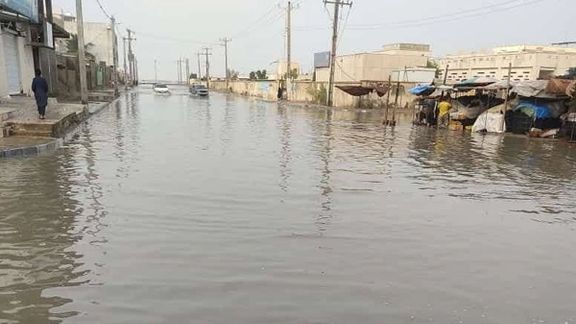
Floods caused by torrential rains have swept through drought-stricken Iran disrupting electricty and clean water in the worst-hit areas of the south and east.

Floods caused by torrential rains have swept through drought-stricken Iran disrupting electricty and clean water in the worst-hit areas of the south and east.
Head of the crisis management taskforce of Hormozgan province said on Saturday that an eight-year-old girl was drowned by floodwater in Bandar Abbas. He added that about 30 villages lost power and a lot of roads are blocked, making rescue operations even harder and slower. Floods have also caused damage to agricultural lands, houses and infrastructure.
In the eastern province of Sistan-Baluchestan, the flood has caused enormous material damage, leading to the closure of schools, shops and offices. The province was already suffering from lack of clean water amid a drought.
The director of the Bushehr meteorological office said on Saturday that heavy rain has caused seasonal rivers to overflow their banks which led to flooding of thoroughfares in several cities. He also spoke about serious damage to the farmlands and orchards.
Mehdi Valipour, the head of Iran’s Red Crescent Society, said on Friday that rescue operations were underway in about a dozen flood-stricken provinces.
Iran’s Meteorological Organization has predicted more rains, blizzards, thunderstorms, and hails for almost all the country in the next five days.
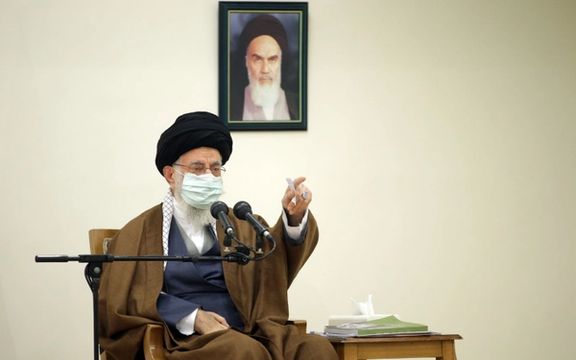
Iran’s leader has lashed out at former US president Donald Trump and others for the killing of Qasem Soleimani, saying they “will pay back for their crime.”
Supreme Leader Ali Khamenei insisted that the IRGC general will remain in history as a martyr whereas his killers will be forgotten.
During a meeting with Soleimani’s family and close collaborators on the second anniversary of his death Khamenei described him as a martyr and symbol of “resistance” in the region, stressing, “Martyr Soleimani is more dangerous to his enemies than Commander Soleimani”.
“Resistance” or “Resistance front” is a term used by the Islamic Republic to refer to its anti-Western allies and proxies throughout the region, from Hezbollah in Lebanon to Houthis in Yemen, the Syrian president Bashar al-Assad and Iraqi Shiite militias.
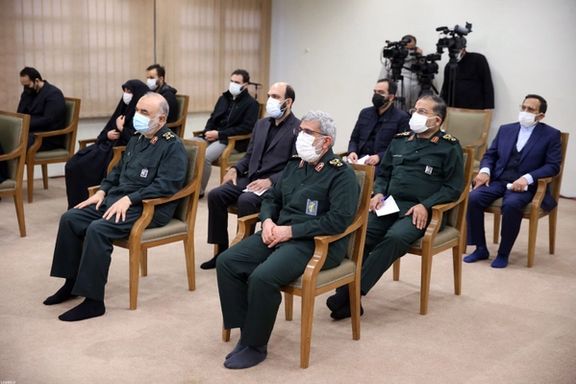
Khamenei said, “Trump and others like him will be forgotten and lost in the dustbin of history, of course after paying for their crimes in the world.”
As the country is getting ready to hold ceremonies for the second anniversary of Soleimani’s killing threats and rhetoric by Iranian officials have increased. Iran is planning a long list of events lasting ten days to mark Soleimani’s “martyrdom”. He was killed by a US drone strike on January 3, 2020, as he arrived in Baghdad.
He was Iran’s top military and intelligence operator in the Middle East, organizing proxy forces.
Soleimani played a major role in the Syrian civil war as the coordinator of Iran’s military involvement, including sending tens of thousands of regular and irregular forces to fight in support of Assad.
Iranian officials have often threatened retribution against American and Israeli officials that they have listed as having been involved in ordering, planning and carrying out the drome strike that killed Soleimani. Shortly after his death, Khamenei in January 2020 had said that those responsible for ordering and carrying out the killing had to pay for their actions.
Soleimani’s successor as commander of the extra-territorial Qods (Quds) force, Esmail Ghaani (Qaani) and other officials have also called for retribution against Trump and others.
Iran’s hardline leader said that two years after Soleimani’s death Iran’s proxies are now in a stronger position and more infused with hope.
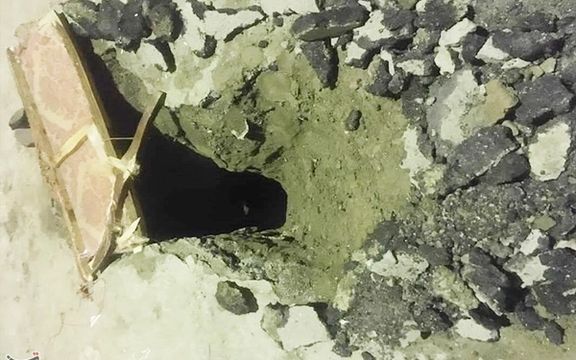
Iran’s Tehran province is literally sinking with large sinkholes and fissures appearing in the densely populated region as underground water reserves decline.
This time a subsidence has led to the evacuation of about a dozen residential units in one of Tehran’s southern neighborhoods.
Local media reports said on Friday that the new sinkhole in Nasimshahr is two meters deep with a length of over 15 meters.
Officials at Tehran’s municipality have blamed human error, saying that the incident is under investigation and that people can come back to their homes soon, but such incidents are usually due to decreasing ground water levels.
According to the government, 31 cities and towns in Esfahan province, 30 cities in Tehran province, 25 urban centers in Kerman province and 24 cities in Khorasan Razavi province are in imminent threat of subsidence. In some regions the ground has sunk by 30 centimeters or one foot.
Fissures have appeared in the historic city of Esfahan, threatening UNESCO protected landmarks. Residents held large protests in November demanding their traditional share of water for the city’s river. Security forces used force and shotguns to suppress the protests, injuring dozens of people.
Land subsidence is not limited to big cities with big construction projects. In many areas in Iran cracks and huge hollows that resemble meteor craters have appeared in the ground in recent years. Ali Saberi, a geologist told local media that one million hectares of land in the country is affected by subsidence and the main cause is unlimited extraction of ground water.
Land subsidence − which can occur for many reasons including human activities like mining, extracting underground water, petroleum, or gas − is a growing problem in many other places including Mexico City where a growing population of 10 million has resulted in the exhaustion of underground water resources.
Some blame the water situation in Iran on an emphasis in achieving self-sufficiency in agriculture, including water-intensive crops such as rice and other grains, which was the aim of successive Iranian administrations even before the United States imposed ‘maximum pressure’ sanctions in 2018.
Supreme Leader Ali Khamenei in 2000 and 2001, promoted an increase in population and self-sufficiency in wheat and rice as the main agricultural goal.
Repeated droughts in Iran have made water management an urgent issue, but critics say wrong water conservation policies or the lack of any planning have played a major role in the current situation.
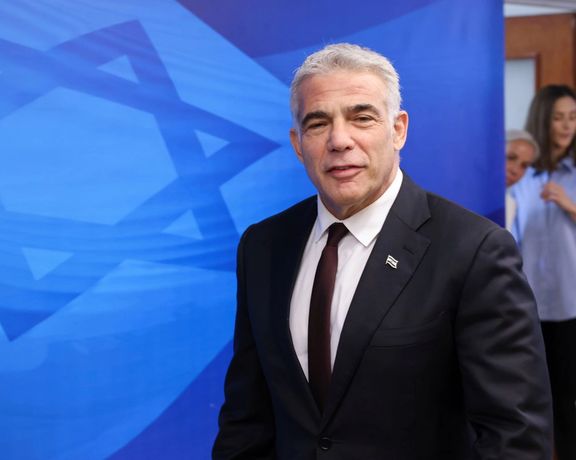
Foreign Minister Yair Lapid has claimed Israel has superior military capabilities, amid talks between world powers and Iran on restoring the 2015 nuclear deal.
In an interview with Channel 12 on Friday, Lapid answering a question about Israel’s military ability to attack and destroy Iran’s nuclear infrastructure, said, “Israel has capabilities, some of which the world, and even some experts in the field, cannot even imagine. And Israel will protect itself against the Iranian threat.”
As world powers try to restore the Joint Comprehensive Plan of Action (JCPOA), abandoned by former US president Donald Trump, Israel is concerned of a new agreement that would not permanently restrict Iran’s nuclear program, while lifting sanctions giving Tehran a financial lifeline.
The foreign minister also repeated an earlier position that if Israel feels threatened by Iran’s nuclear advances, it could attack without necessarily informing the Biden administration, which is pursuing a new accord with Iran.
“Israel will do whatever it needs to do to protect its security. And we don’t need anybody’s permission for that. That’s been the case since the first day we established this state,” he said. He also added that “Israel is not against a good deal, it is only against the wrong deal.”

Iran's space rocket launch on Thursday failed to put its research payloads into orbit after the vehicle was unable to reach the required speed, spokesman said.
The rocket launch, which came as indirect US-Iran talks take place in Austria to try to salvage a 2015 nuclear deal, drew criticism from the United States, Germany and France.
"For a payload to enter orbit, it needs to reach speeds above 7,600 (meters per second). We reached 7,350," the spokesman, Ahmad Hosseini, said in a documentary about the launch vehicle broadcast on state TV and posted online.
On Thursday, Hosseini did not clarify whether the devices had reached orbit, but suggested the launch was a test ahead of coming attempts to put satellites into orbit.
Iran, which has one of the widest missile programs in the Middle East, has suffered several failed satellite launches in recent years due to technical issues.
Washington has said it is concerned by Iran’s development of space launch vehicles, and a German diplomat said Berlin had called on Iran to stop sending satellite launch rockets into space, adding that they violated a UN Security Council resolution.
France said on Friday the rocket launch aimed at sending three research devices into space violated UN rules and was "even more regrettable" as nuclear talks with world powers were making progress.
Iran’s deputy defense minister said Friday that Iran will carry out more space launches until March and added that it will use an advanced version of its Simorgh rocket, that was used in the latest launch.
Iran's foreign ministry rejected the US, German and French criticism of Tehran's launch of the satellite-carrying rocket.
"Scientific and research advances, including in the field of aerospace, are the inalienable right of the Iranian people, and such meddling statements will not undermine the Iranian people's determination to make progress in this field," it said in a statement.
There has been suspicion that Thursday’s launch might be a message, for audiences foreign and domestic, that Iran is negotiating from strength in Vienna and will not accept demands that it unliterally scale back its missile program.
Tehran denies that its space activity is a cover for ballistic missile development or that it violated a UN resolution.
A UN resolution in 2015 "called upon" Iran to refrain for up to eight years from work on ballistic missiles designed to deliver nuclear weapons following the nuclear agreement with six world powers. Some states said the language did not make such a pledge obligatory.
Iran says it has never pursued the development of nuclear weapons and, therefore, the resolution does not apply to its ballistic missiles, which Tehran regards as an important deterrent and retaliatory force against US and other adversaries in the event of war.
Gulf Arab states and Israel have serious concerns over Iran’s ballistic missiles, considering threats by Iran’s military and senior officials to wipe Israel off the map. In September 2019, a large scale missile and drone attack launched against Saudi Arabia’s oil installations were attributed to Iran.
Iran launched its first satellite Omid (Hope) in 2009, and its Rasad (Observation) satellite was sent into orbit in 2011. Tehran said in 2012 that it had successfully put its third domestically made satellite, Navid (Promise), into orbit.
In April 2020, Iran said it successfully put the country's first military satellite into orbit, following repeated failed launch attempts in previous months.
The United States imposed sanctions on Iran's civilian space agency and two research organizations in 2019, saying they were being used to advance Tehran's ballistic missile program.
With reporting by Reuters
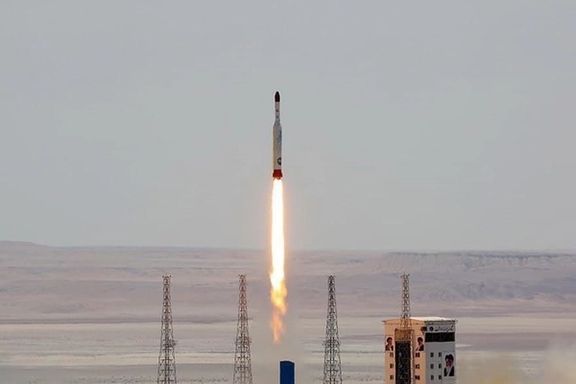
France on Friday condemned Iran's satellite rocket launch and said it was "all the more regrettable" as nuclear talks with world powers were making progress.
The French satement echoed concerns voiced by the United States and Germany.
Iran said on Thursday it had used a satellite launch rocket to send three research devices into space, as indirect US-Iran talks take place in Vienna to try to salvage a 2015 nuclear deal.
The satellite launch was in breach of UN Security Council resolutions, France's foreign ministry said.
"These activities are all the more regrettable as they come at a time when we are making progress in the nuclear negotiations in Vienna," the French foreign ministry said.
"We call on Iran not to launch further ballistic missiles designed to be capable of carrying nuclear weapons, including space launchers."
The US State Department said on Thursday Washington was aware of reports on the launch, adding such launches defy a UN Security Council resolution enshrining the 2015 nuclear deal.
A German diplomat said such launches could be used to test technology for ballistic missiles which in principle could be used to deliver nuclear weapons.
Tehran denies its space launch activity is a cover for ballistic missile development.